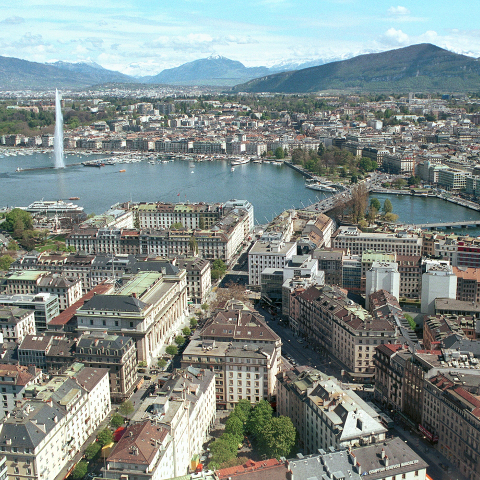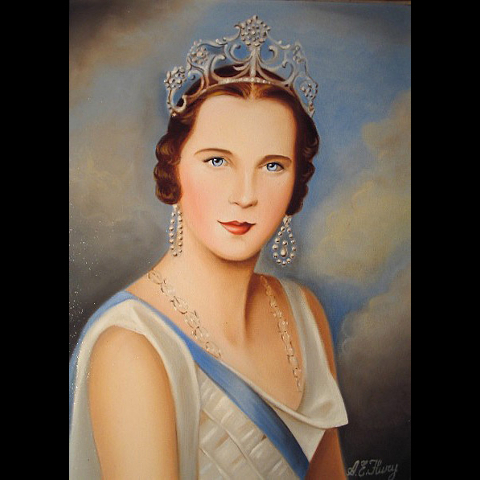Composers / Witold Lutosławski / Places catalog
Geneva
The last queen of Italy, Marie José, after reigning for the month of May 1946, settled in Switzerland, where she devoted herself to her hobbies: sport and music. One of the fruits of that latter passion was a composition competition which she funded in Geneva. So in October 1960, Witold Lutosławski made his first journey to Geneva, to sit on the jury of that competition. Eight years later, he was a guest of the former queen at her residence in Merlinge, near Geneva.
Before long, his music was heard in Geneva – in exceptional circumstances. To mark the centenary of the International Red Cross, four composers were approached to write works for the occasion. Two composers were chosen from Western Europe, the Englishman Benjamin Britten and the Swiss Frank Martin, and two from Eastern Europe, the Russian Dmitry Shostakovich (who rejected the commission) and the Pole Witold Lutosławski. The work that Lutosławski composed for that occasion concluded a grand concert held on 1 September 1963 at the Geneva Opera House. It was announced with a title that expressed the ideals of the Red Cross: Per humanitatem ad pacem – ‘Through humanitarianism to peace’. The composer later changed this to a more musical title, calling this short piece a Postlude. The precision with which he treated harmony and rhythm in this work could be represented by means of arithmetic relations; one might say that the Postlude was composed with the precision of a Swiss clockmaker.
One event of importance for the promotion of Lutosławski’s music in Switzerland was a Diorama of contemporary music organised in May 1968 by Radio Suisse Romande. The main theme of the programme was Poland. The concerts were held in several cities, and the works performed included Lutosławski’s Five Songs to words by Iłłakowiczówna and String Quartet. As a guest of the Diorama, the composer gave a couple of lectures on his music, speaking mainly about aleatory technique. He also conducted his Second Symphony, in which he had the opportunity to show in practice what that technique involved. And it was then that he met Queen Marie José.
-

Panorama of Geneva and Lake. (creative commons)
-

Portrait of Queen Maria José by Albert Edwin Flury. (creative commons)